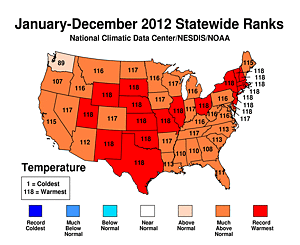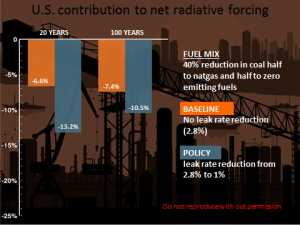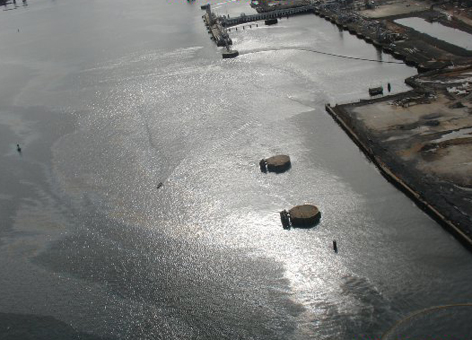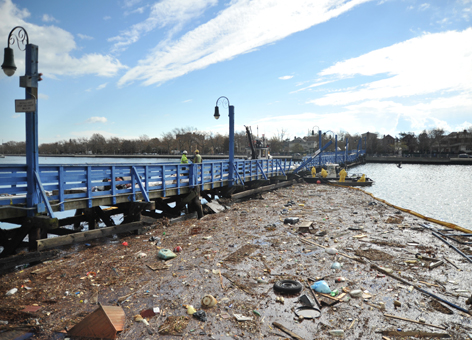By George Hale,
NASA Goddard Space Flight Center
New research using combined records of ice measurements from NASA’s Ice, Cloud and Land Elevation Satellite (ICESat), the European Space Agency’s CryoSat-2 satellite, airborne surveys and ocean-based sensors shows Arctic sea ice volume declined 36 percent in the autumn and nine percent in the winter over the last decade.
The work builds on previous studies using submarine and NASA satellite data, confirms computer model estimates that showed ice volume decreases over the last decade, and builds a foundation for a multi-decadal record of sea ice volume changes.
In a report published online recently in the journal Geophysical Research Letters, a large international collaboration of scientists outlined their work to calculate Arctic sea ice volume. The satellite measurements were verified using data from NASA’s Operation IceBridge, ocean-based sensors and a European airborne science expedition. This was compared with the earlier sea ice volume data record from NASA’s ICESat, which reached the end of its lifespan in 2009.
The researchers found that from 2003 to 2008, autumn volumes of ice averaged 2,855 cubic miles (11,900 cubic kilometers). But from 2010 to 2012, the average volume dropped to 1,823 cubic miles (7,600 cubic kilometers) — a decline of 1,032 cubic miles (4,300 cubic kilometers). The average ice volume in the winter from 2003 to 2008 was 3,911 cubic miles (16,300 cubic kilometers), dropping to 3,551 cubic miles (14,800 cubic kilometers) between 2010 and 2012 — a difference of 360 cubic miles (1,500 cubic kilometers).
The study, funded by the United Kingdom’s National Environmental Research Council, the European Space Agency, the German Aerospace Center, Alberta Ingenuity, NASA, the Office of Naval Research and the National Science Foundation and led by Professor Seymour Laxon of University College London, marks the first ice volume estimates from CryoSat 2, which was launched in 2010. “It’s an important achievement and milestone for CryoSat-2,” said co-author Ron Kwok at NASA’s Jet Propulsion Laboratory in Pasadena, Calif.
Combining the ingredients
Although CryoSat-2 data show a decrease in ice volume from 2010 to 2012, two years is not a long enough time span to determine a trend. This is where NASA’s data and scientists come in. Data from ICESat and IceBridge are freely available, but combining measurements from different sources can be challenging. Kwok said researchers spent months working out how to compare the datasets and making sure they were compatible enough to compare trends. “We participated as collaborators to help interpret results from the datasets we’re familiar with,” said scientist Sinead Farrell at NASA’s Goddard Space Flight Center in Greenbelt, Md.
CryoSat-2 and ICESat both measure sea ice freeboard, which is the amount of ice floating above the ocean’s surface. Researchers use freeboard to calculate ice thickness. This thickness measurement is then combined with ice area to come up with a figure for volume. The two satellites used different methods for measuring freeboard, however. ICESat used a laser altimeter, which bounces a laser off the snow covering the sea ice, while CryoSat-2 uses a radar instrument that measures surface elevation closer to the ice surface. These instruments have a different view of the surface, but researchers found they gave comparable measurements.
Check and double check
Comparing the two datasets and ensuring their quality called for additional data. The two satellites do not cover overlapping time spans, so researchers used measurements from upward-looking sonar (ULS) moorings under the ocean’s surface, located north of Alaska. These instruments, operated by the Woods Hole Oceanographic Institution’s Beaufort Gyre Exploration Project, provide a continuous record of ice draft — thickness of ice below the ocean’s surface — in parts of the Beaufort Sea from 2003 to the present day. Thickness measurements from these ULS moorings were comparable to ICESat and CryoSat-2 data throughout both missions’ time spans. “ULS ice draft since 2003 served as the common data set for cross comparison of the ICESat and CryoSat-2 measurements,” said Kwok.
Researchers took extra care to verify CryoSat-2′s data, as it is a new satellite with a new instrument. In addition to the ULS data, CryoSat-2 measurements were also verified by two airborne science campaigns: flights by an aircraft operated by the Alfred Wegener Institute for Polar and Marine Research in Bremerhaven, Germany; and Operation IceBridge, a NASA mission tasked with monitoring changes in polar ice to bridge the gap in measurements between ICESat and its replacement, ICESat-2, scheduled to launch in 2016. During the 2011 and 2012 Arctic campaigns, the IceBridge team coordinated closely with ESA’s CryoVEx program to verify CryoSat-2 data. “IceBridge was used as a validation tool to understand thickness measurements from CryoSat-2,” said scientist Nathan Kurtz at NASA Goddard Space Flight Center, Greenbelt, Md.
The road ahead
After months of work, researchers had assembled a multi-year dataset, which they could compare to sea ice volume predictions from the Pan-Arctic Ice-Ocean Modeling and Assimilation System (PIOMAS). Because of the short time span of previous satellite studies, researchers have used models like PIOMAS to simulate changes in sea ice volume. The study’s observations show a larger autumn ice volume decrease than predicted, while changes in the winter are smaller than in the model simulation. “It’s important to know because changes in volume indicate changes in heat exchange between the ice, ocean and atmosphere,” said Kurtz.
This study, and the knowledge that the datasets are compatible, also serves to lay groundwork for ICESat-2. CryoSat-2 gathers data over more of the Arctic than ICESat did by reaching 88 degrees north (ICESat reached 86 degrees). ICESat-2 will orbit Earth at the same angle as CryoSat-2 and will therefore survey the same amount of the Arctic.
CryoSat-2 is funded through 2017 but will likely operate until the end of the decade, giving overlapping coverage with ICESat-2. This potential overlap greatly improves the prospects for better knowledge of Arctic sea ice volume. “The hope is that we’ll be able to create a multi-decadal record using ICESat, CryoSat-2 and ICESat-2,” said Kwok.
For more about ICESat, visit: http://icesat.gsfc.nasa.gov/. For more about Operation IceBridge, visit: http://www.nasa.gov/mission_pages/icebridge/index.html. For more about CryoSat-2, visit: http://www.esa.int/Our_Activities/Observing_the_Earth/CryoSat. For more about the Beaufort Gyre Exploration Project, visit: http://www.whoi.edu/page.do?pid=66296.


























 Some people are wearing masks
Some people are wearing masks


The World Bank and UN Security Council on Global Warming Threat
I had the honor of speaking to the UN Security Council about an increasingly dangerous threat facing cities and countries around the world, a threat that, more and more, is influencing everything that they and we do: climate change.
World Bank President Jim Kim is in Russia right now talking with G20 finance ministers about the same thing – the need to combat climate change. Every day, we’re hearing growing concerns from leaders around the world about climate change and its impact.
If we needed any reminder of the immediacy and the urgency of the situation, Australia Foreign Minister Bob Carr and our good friend President Tong of Kiribati spoke by video of the security implication of climate effects on the Pacific region. Perhaps most moving of all, Minister Tony deBrum from the Marshall Islands recounted how, 35 years ago, he had come to New York as part of a Marshall Islands delegation requesting the Security Council’s support for their independence. Now, when not independence but survival is at stake, he is told that this is not the Security Council’s function. He pointed to their ambassador to the UN and noted that her island, part of the Marshall Islands, no longer exists. The room was silent.
It fell to us to point out the security implications of business as usual. If the world does nothing to stop climate change:
So what do we do?
First, cities. Developing countries are urbanizing fast – some will be shifting from less than 20% urban today to more than 60% in the next 30 years. The decisions they make today – about transportation infrastructure, water supply, land use rules, building codes and more – will lock in development patterns for decades to come.
They can choose to grow green with careful, integrated urban planning and support – they will need direct finance and assistance. We will need to step up our work here in support of our clients. In China, cities are seizing on low-carbon development options. We’re helping Lagos develop more sustainable transportation.
We will need to change the way we produce our food, as well. The world’s farmers will need to produce 70% more food by 2050 to feed a population expected to pass 9 billion people, and yet climate scientists tell us that for every 1 degree Celsius increase in average temperature around the world, crop yields will decrease by an average of 5%. We can and must farm in ways that increase productivity, build farmers’ ability to cope with erratic weather, and increase carbon storage on land. We are mobilizing global alliances on climate-smart agriculture, and we have no time to lose.
Stopping a 4°C warmer world from becoming reality and staying at a 2°C one still requires huge investments in adaptation – effectively the resilience of countries, cities, communities, especially the poor.
Disaster risk management – putting effort into prevention and preparedness rather than simply reacting after disasters strike – saves lives and property, and it is increasingly at the core of the Bank’s work. Preserving wetlands and mangroves provides protective storm barriers. Avoiding development in vulnerable areas prevents flooding and deaths that often affect a community’s poorest residents. Through the Global Facility for Disaster Reduction and Recovery, the Bank is working with client countries to mainstream disaster risk management into their development planning.
We recognize that there is much more we can do. President Kim has challenged us to take bold action. We need to get prices right, get finance flowing, and work where it matters most. Our mission, to end poverty and build shared prosperity, will be futile if we don’t.
Rachel Kyte
Vice President for Sustainable Development
www.worldbank.org/sustainabledevelopment